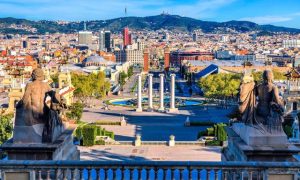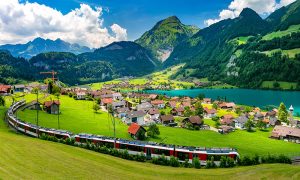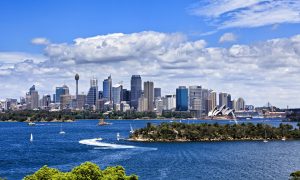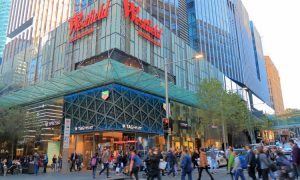Australia has long been the world's favoriteimmigrantsAustralia is one of the world's leading destinations. Whether it's for its pleasant climate, cultural diversity or quality of life, Australia attracts a large number of immigrants from all over the world. HoweverImmigration to AustraliaMore than just an emotional and life-affirming move, it means adapting to a whole new economic environment and cost of living. Understanding the cost of living in Australia and how to develop an effective economic adjustment strategy is key to every migrant's successful integration into Australian society. In this article, you'll learn more aboutImmigration to Australiacost of living afterward and offers a range of economic adaptation strategies to help you better plan for the future.
I. Overview of the cost of living in Australia
1. Housing costs: significant geographic variations
Housing costs are one of the biggest expenses in Australia. The cost of housing varies considerably between cities and regions, depending on location and lifestyle.
- Sydney & Melbourne: As the two largest cities in Australia, Sydney and Melbourne generally have higher housing costs. Based on 2025 data, the monthly rent for a one-bedroom apartment in Sydney's city center is around AUD$$2,500, while the monthly rent for a city center apartment in Melbourne is slightly lower at around AUD$$2,000.
- Small and medium-sized cities such as Brisbane and Perth: Rents in these cities are relatively low, with one-bedroom apartments rented for roughly A$$1,500 to A$$2,000 per month.
- remote area: If you choose to move to a remote area or small town, rents will be more competitive and may be as little as A$$1,200 to A$$1,500 per month.
Regardless of the city you choose to live in, you should budget beforehand to ensure that you are not overburdened with housing expenses.
2. Food and daily expenses: cost of supermarkets and catering
Food and dining play a big part in the daily cost of living in Australia.
- Supermarket Shopping: In Australia, the price of food is relatively high, especially fresh vegetables and fruit. For example, 1 kilogram of beef costs about A$$12 and 1 liter of milk about A$$2.00, while the price of fruits and vegetables varies depending on the season and variety.
- dine out: If you choose to dine out, restaurants are also more expensive. A light meal at an average restaurant is around AUD$$20-$30, while a dinner for two at a mid-range restaurant can cost upwards of AUD$$100. With the takeaway and coffee culture prevalent in Australia, you can also opt for quick and easy takeaway meals, which usually cost between AUD$$15-$20.
3. Transportation costs: public transportation versus private travel
In Australia, transportation costs also vary by region.
- mass transit: Major cities such as Sydney, Melbourne and Brisbane have well-developed public transportation systems, including trains, buses and streetcars. Fares for public transportation are usually between AUD$$3-$5 and may fluctuate depending on travel time and distance. Monthly passes usually cost between A$$100-$150.
- self-drive travel: If you choose to buy a used car, expect the purchase cost to be around A$$5,000-$15,000. In addition, gas and parking fees are also part of your daily expenses. Fuel prices are roughly A$1.50-$2.00 per liter, and parking fees vary depending on the city you live in.
4. Medical insurance: necessary coverage
Australia has a public healthcare system, Medicare, and all Australian citizens and permanent residents have access to the basic healthcare services provided by the system. However, for migrants, it is often necessary to take out private health insurance to supplement their medical coverage.
- Private medical insurance: Depending on the insurer, the annual fee for an individual health insurance policy is roughly between A$$1,000 - A$$2,000. The cost can fluctuate when choosing different coverage and insurance companies.
5. Cost of education: differences between public and private schools
Australia's education system is of high quality, but its costs vary depending on the type of school.
- public school: For migrant families, public school fees are relatively low, typically between A$$5,000-$10,000 per year.
- private school: Tuition fees at private schools are usually higher, especially in major cities such as Sydney and Melbourne, and can be as high as AUD$$20,000 - AUD$$30,000 a year.
If you plan to send your child to a private school, it is important to budget well in advance and choose the right school for your family's financial situation.

II. Economic adaptation strategies: how to reduce the cost of living
1. Selection of a suitable city and region of residence
Choose a suitable city or region to live in according to your workplace and living needs. The cost of living is higher in big cities. If you don't mind a small town with a slower pace of life, choosing a small or medium-sized city such as Brisbane or Perth will effectively reduce the cost of living. At the same time, the Remote Area Immigration Policy may also bring additional bonus points, which will help you obtain permanent resident status earlier.
2. Saving money on daily expenses: shopping and meal planning
Reduce unnecessary expenses through sensible shopping plans and diet management.
- Purchase of commodities: Buying in bulk at major supermarkets in Australia, such as Woolworths, Coles, etc., usually results in lower prices, especially if you can take advantage of discount promotions.
- Cooking instead of eating out: Cooking for yourself not only ensures a healthy diet, but also saves you the high cost of eating out.
- Use of public transportation: If you live in a big city, try to use public transportation to avoid high parking and gas costs.
3. Finding additional sources of income
The Australian job market, while competitive, offers plenty of opportunities for part-time and freelance work. You may want to consider increasing your income in the following ways:

- Part-time work: In Australia, many industries offer flexible part-time work opportunities, particularly in the retail, restaurant and service sectors.
- Freelance and remote work: If your career allows for remote work, look for freelance projects related to your profession and increase your income by taking on outsourced work.
4. Choosing the right health insurance
Ensure that you choose a cost-effective health insurance plan for more comprehensive medical coverage and lower medical costs. If you are working in Australia and meet certain conditions, you may be eligible for Medicare. otherwise, it is advisable to purchase a suitable private health insurance policy.
III. Summary
Immigrant life in AustraliaCosts are relatively high, especially for rent, food, transportation and education in major cities such as Sydney and Melbourne. However, by choosing the right city to live in, smart shopping planning, sensible transportation options and flexible sources of income, you can effectively reduce your cost of living and ensure that you are not overstretched financially. Above all, adapting to a new environment takes time and planning, and with adequate preparation you will be able to get through the financial adjustment period and enjoy the good life in Australia.






